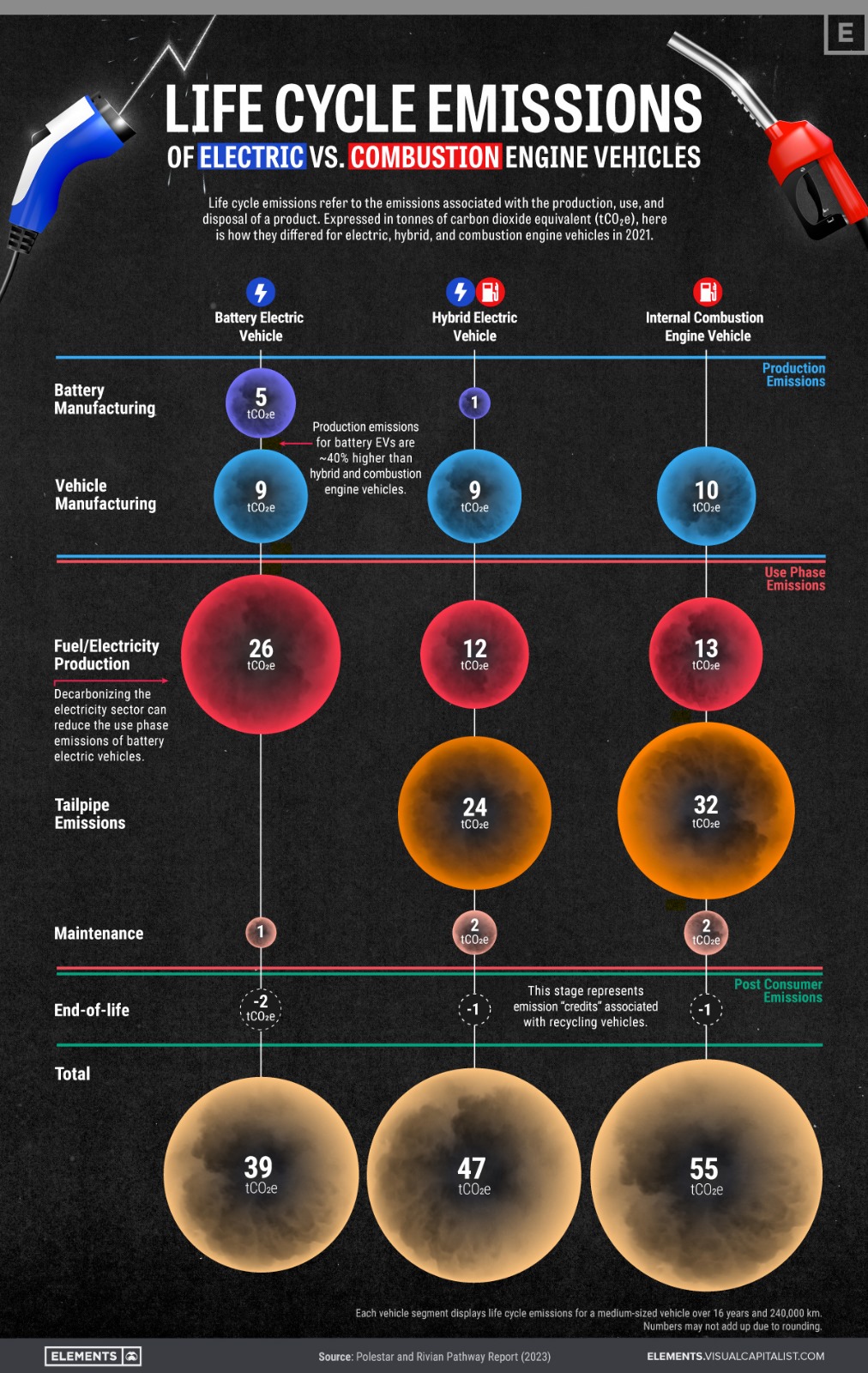Navigating Uncertainty in Comparative Life Cycle Assessments: Electric vs. Combustion Family Cars

Conducting a comparative Life Cycle Assessment (LCA) for family cars with electric (EV) and internal combustion engines (ICE) is an intricate yet essential exercise. Such an analysis informs government policy, influencing environmental, economic, and social outcomes. However, given the complexity of the systems involved and the rapid evolution of technology, inherent uncertainties can significantly impact the study’s results. Ensuring scientific rigor, transparency, and adaptability is vital, especially when results are subject to scrutiny.
Key Sources of Uncertainty in the Comparative LCA
- Manufacturing Processes and Locations
- Regional Variability: The environmental impacts of vehicle production are strongly influenced by the manufacturing location. Factors such as local energy grid composition, regulatory standards, and labor practices create substantial variability.
- Energy Inputs: A facility powered by renewable energy sources will have a lower carbon footprint compared to one relying on fossil fuels.
- Material Composition and Resource Availability
- Critical Materials: EV batteries rely on materials like lithium, cobalt, and nickel. The extraction, processing, and transportation of these materials have distinct environmental footprints.
- Future Constraints: Potential scarcity, geopolitical dynamics, or environmental regulations could restrict access to certain resources, increasing costs and shifting material supply chains.
- ICE Manufacturing: While traditional steel and aluminum are dominant in ICE production, lightweight alloys and composites used to improve fuel efficiency also carry variable impacts.
- Technological Evolution
- Battery Technology: Rapid advancements, such as the emergence of solid-state batteries or alternative chemistries, could dramatically alter the environmental footprint of EVs.
- Autonomous Vehicles: Potential integration of autonomous systems may change usage patterns, impacting overall lifecycle emissions.
- Energy Mix for EV Charging
- Electricity Grid Composition: The environmental impact of EVs is highly dependent on the energy mix used for charging. For instance, a grid dominated by coal emits far more greenhouse gases than one powered by wind, solar, or hydropower.
- Temporal Variability: Grid dynamics can change seasonally or over decades, influencing the long-term sustainability of EV adoption.
- Usage Patterns and Lifespan
- Driving Behavior: Variability in driving conditions (urban vs. rural, stop-and-go traffic vs. highway driving) affects fuel efficiency and emissions.
- Vehicle Lifespan: Differences in the longevity of EVs versus ICE vehicles, as well as battery replacement cycles, influence overall lifecycle impacts.
Building Robustness: Essential Disclaimers for the LCA Report
To address these uncertainties and ensure the validity of the study, the following disclaimers are crucial:
- Region-Specific and Time-Bound Applicability
The LCA results are geographically specific and reflect current grid compositions and manufacturing practices. Any changes in these parameters, such as the adoption of cleaner energy grids or shifts in global supply chains, will necessitate updates to the findings. - Material and Manufacturing Assumptions
The analysis assumes specific materials and manufacturing processes. For example, the environmental impact of mining lithium or refining aluminum is based on today’s extraction methods and energy inputs. Future changes in recycling technologies or material substitutions could alter the outcomes significantly. - Technological Constraints
The study is based on the current state of battery and combustion engine technology. Any breakthroughs—such as advancements in hydrogen fuel cells, solid-state batteries, or biofuels—would require a reassessment of the findings. - Energy Grid Dynamics
The environmental impact of EVs is calculated using the current electricity mix. As grids transition to incorporate higher percentages of renewable energy, the relative advantages of EVs are likely to increase. Conversely, reliance on fossil fuels may reduce these benefits. - Lifecycle Boundaries
The scope of the LCA includes production, use-phase emissions, and end-of-life disposal. However, variations in recycling rates, second-life applications for EV batteries, or regional end-of-life management practices could influence the results.
Incorporating Technical Rigor: Strategies for Enhanced Credibility
To strengthen the LCA and withstand scrutiny, the following methodologies and approaches should be incorporated:
- Sensitivity Analysis
Quantify the impact of varying key parameters, such as battery chemistries, grid compositions, or manufacturing locations. This will illustrate how robust the conclusions are under different scenarios. - Scenario Planning
Develop alternative scenarios reflecting potential future developments, such as:- Increased reliance on renewables in energy grids.
- Changes in battery recycling technologies.
- Shifts in consumer behavior, such as widespread car-sharing adoption.
- Comprehensive Data Documentation
Provide detailed information on data sources, assumptions, and calculation methods. Transparent data modeling ensures reproducibility and minimizes room for misinterpretation. - Dynamic LCA Framework
Build an adaptable model that can be updated as new data, technologies, or policies emerge. This will keep the analysis relevant over time. - Peer Review and Public Consultation
Engage independent experts to validate methodologies and assumptions. Involve stakeholders in reviewing key findings to build consensus and credibility.
Conclusion
A comparative LCA of electric versus combustion family cars is not just a technical exercise; it is a decision-making tool with far-reaching implications. By acknowledging and addressing uncertainties, incorporating robust methodologies, and providing clear disclaimers, policymakers can rely on the results to guide sustainable transportation strategies. As technology and energy systems evolve, the LCA must remain a dynamic tool, adaptable to new realities.
